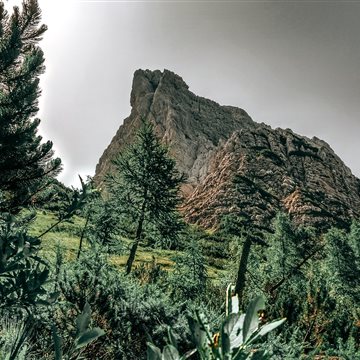Some call it the Preval Plain, others call it the Preval Valley. But for those who come here regularly and those who, like me, actually live here it’s simply Preval: a bucolic oasis crossed by a network of pleasant roads, lonely cart-roads and cycle/pedestrian paths which blend perfectly into the landscape.
A harmonious sequence of flat areas, tidily planted with crops or left as meadows, and gentle hills covered in woods and vineyards. Geologically speaking, these hills belong to the range of the Collio Goriziano and they’re often referred to as “Lower Collio”. But contrary to Collio, which is already a well-established, well-known tourist destination, Preval is rarely seen as a unique geographical area in its own right even though, to all intents and purposes, it is.

If we were to describe Preval in historical-geological terms, we could say that it is a valley basin set between the gentle hills of the Gorizian and Slovene Collio, where in the past the River Versa formed those vast swamps and wetlands mentioned in ancient records by the original German name of Prevali-Wiesen or Prewald.
According to one of these documents, “The hills of this hollow are undoubtedly among the most fertile and best farmed and they are preferred for producing that most reliable wine called Ribolla”. This is in fact the zone of the great white DOC wines, an area with an ancient tradition of winemaking.
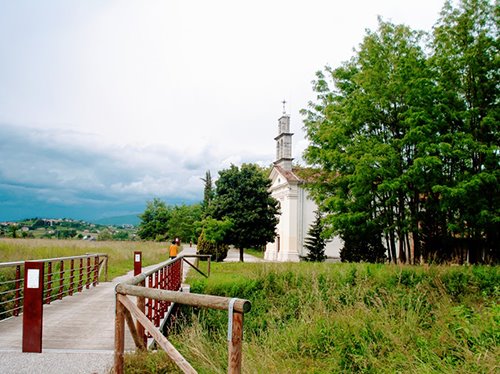
The Preval basin, covered by a lake in the Pleistocene, was a mainly swampy area and remained so up to the 1930s. Then it was drained and lost some of its special floristic characteristics (the Austrian botanist Eduard Ludvik Pospicha, author of Flora des Österreichischen Küstenlandes – “Flora of the Austrian Littoral” – mentions the importance, in the Preval zone, of “Slightly alkaline low peat bogs with relict glaciers”) but gained great agricultural and landscape value.
Today, the only vestiges of that former swamp are a few expanses of water known as the Preval ponds in the municipalities of Cormons, Capriva, Mossa and San Floriano del Collio. In 2001 they became the Palude del Preval Site of Community Importance. It’s a relatively small SCI but it’s particular because it includes wetlands in a hilly area. The site is on the flyway of various bird species that use it as a stopover point on their migration.
The plain is 5 km long and 2 km wide and occupies a surface area of some 1400 hectares (3375 acres). Today it is an area of great natural and landscape value, where agriculture maintains and contributes to a high level of biodiversity.
Visitors are welcomed to the various municipalities by three placards, each bearing different slogans and pictures which ideally sum up the essence of this area:
Welcome to where nature prevails
Welcome to where silence prevails
Welcome to where beauty prevails
These signs were part of Gorizia provincial council’s local tourism marketing and promotion campaign, which was launched about ten years ago but then fizzled out.
In my capacity as a nature guide, an inhabitant and regular explorer of this area, I’d like to dwell on these three welcome messages and on their background photos because they perfectly sum up all that this little-known corner of Collio has to offer its visitors.
Welcome to where silence prevails
With a close-up of a sweet little roe deer in the background. We all need silence. We live surrounded mainly by noise and commotion, but if we immerse ourselves in nature’s silence – even if only for short breaks – we discover that the world around us follows a pace that we should re-embrace and never forget.
Welcome to where nature prevails
With a picture of the Shrine of Santa Maria dei Popoli in the background. It’s important to know how to read, see and interpret the richness of nature and the landscape. Every time we go on a country walk we can see much more than we were looking for if we learn to look with our heart, too, and not just our eyes. The church of San Marco in Preval, now Santa Maria Regina dei Popoli, is situated in the centre of the plain. It was over the centuries an important religious centre for the Collio villages around it, and a major place of Marian pilgrimage from the Middle Ages onwards.
Welcome to where beauty prevails
In the background, an elegant egret, which was also chosen as the symbol and logo of Preval. There are amazingly beautiful things in every aspect of nature, even in little-known places, but we don’t always take the time to appreciate their value and beauty.
This is how the nature, silence and beauty of places off the beaten tourist track form the perfect way of describing those places with their centuries of history of places and people. A past full of interesting events and memories of which important traces still remain, vestiges of landscape elements that have been sadly lost, such as four water mills on the Versa, remains of mosaic floors, remains of lake dwellings and ancient landing places for small boats.
This tells us a lot about what this ancient swampy area looked like. Its particular climate made it the habitat of plants which disappeared after the area was drained. These include several species of orchids and carnivorous plants usually found in alpine areas; the valley’s special macroclimate enabled them to flourish here.
It’s a lovely area to visit, ideal for those interested in slow tourism. A gentle sequence of ups and downs designed for people who enjoy walking, cycling tours, horse-riding at a slow pace. The plain is in fact crisscrossed by a network of cycle/pedestrian paths created years ago as part of Gorizia regional council’s “Slow Collio: a landscape to drink in” project. The network connects with the FVG3 Pedemontana-del Collio Cycleway and the famous Wine Route.
There are motorhome stopping places and areas with tables, benches and bike racks dotted around the various municipalities and three different, marked routes. The mountain route is a bit difficult, then there is a valley route in the heart of the plain, plus a route which winds through villages and small towns where there are still stone-built country homes with their characteristic internal courtyards that often include the tools used for ancient crafts and lifestyles typical of yesteryear country life.
This is my beloved Preval, whose nature continues to thrill me on every walk: flights of cranes and geese preceded by their calls; the gentle eyes of roe deer as they bound through fields and vineyards; the elegance of the slow, stately progress of herons and little egrets in the fields; hares with ears twitching as they venture as far as the gardens of the first houses; and, last but not least, the lively squirrels that suddenly dash across the trail as I walk into the woods on the hills.
For me, it’s a full-immersion experience of a countryside where, luckily, the vineyards are still a soul-stirring ensemble of biodiversity: buzzards, jays and hoopoes perch on the stakes as if seeking to defend their territory against possible invaders while the sun illuminates the colourful wild flowers growing in the pesticide-free areas between the rows. As evening approaches, fiery sunsets attract me out for the last walk of the day accompanied by the song and calls of country birds.
Luckily, there is still an authentic relationship between people and the land in this corner of Collio, an awareness that, behind the great wines, there is landscape that is not only nature but also history and culture. In the words of Emilio Rigatti in his book Gli alchimisti delle colline (“Alchemists of the Hills”), “The readers of these pages should hasten to visit and stay a few days in this corner of the land, whose agriculture radiates a quiet beauty […]. I’m speaking above all to walkers and cyclists, because feet and pedals are the perfect means of transport in order to savour Preval to the full”.
My Preval is a borderland which can now be enjoyed without borders or customs posts. It could so easily be a community tourist destination, combining an experiential side and sustainability with the hospitality of not only tour operators but also the local community, the true soul of a place.







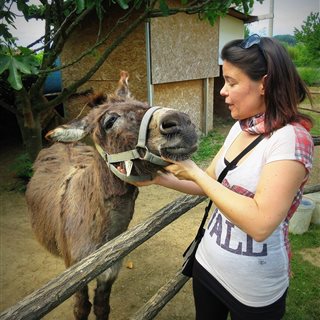

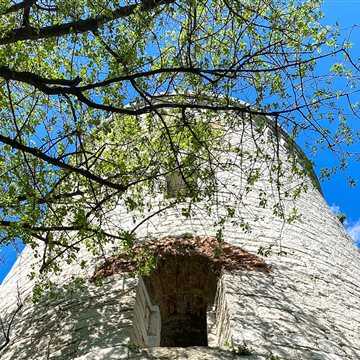

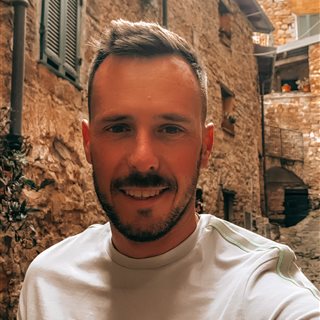 Andrej Bandelj
Andrej Bandelj
